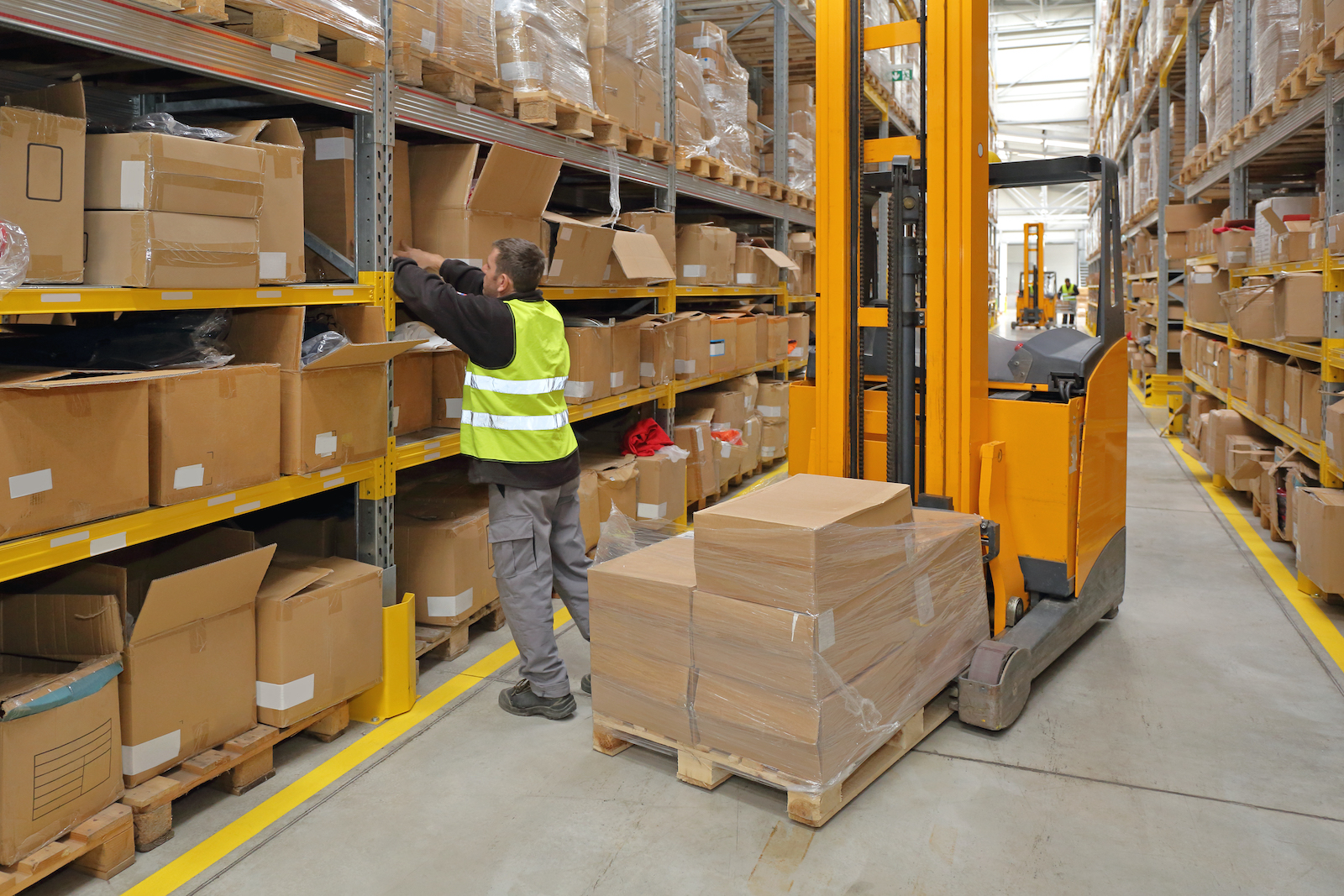Table of Contents
** Minutes
What is the difference between a packing slip and an invoice?
5 reasons why packing slips are important for ecommerce businesses
What should a packing slip include?
In an increasingly digital world — where you buy online, receive your receipt via email, and may even have readily available access to your complete buying history — many consumers and merchants alike have paid less attention to the packing slip.
As an online shopper myself, I never personally look at the packing slip and automatically recycle it if one is included in my order.
Even Amazon has begun eliminating packing slips from single-box deliveries as an initiative to reduce packaging waste.
Nevertheless, packing slips are still a common part of the packing process within many ecommerce shipping operations.
Let’s dive into the world of the packing slip and its role in ecommerce.
What is a packing slip?
A packing slip is a document that includes the complete list of items included in a package. Packing slips include SKU numbers, weights, dimensions, and the number of units that are used by shipping departments to determine what inventory needs to be sent out to accurately complete an order. Finally, the buyer or receiver of the order will check the received items against the packing slip to ensure all the ordered items arrived.
What is the difference between a packing slip and an invoice?
Though similar in nature (and can look nearly identical at a glance), a packing slip and invoice serve different purposes for purchase orders. A packing slip is used to denote the physical goods being received, where an invoice is the financial document of the order, containing information like how much money each product was sold for, the payment terms, payment method, and date.
In some cases, a packing slip and invoice are intended for different people. An invoice is the bill sent to the person responsible for payment, and the packing slip is for the person who receives the package. If you order something for yourself, both documents will come your way. However, if you’re buying something for someone else, you’ll receive the invoice but the recipient will get the packing slip.
While both documents start from the ecommerce store, the invoice is triggered by the payment platform while the packing slip is triggered by the shipping or fulfillment technology.
Additionally, all businesses use invoices, but not all business use packing slips.
5 reasons why packing slips are important for ecommerce businesses
Packing slips note everything that the customer ordered. Because you’re not getting the items from a brick-and-mortar store, ecommerce orders use packing slips for many reasons that help connect the digital world to the physical world through essential shipping documents. Packing slips are important to:
1. Ensure that everything is in the shipment
Checking and double checking is important in the ecommerce fulfillment process. Before a box is sealed and labeled, a packer should verify the items inside are indeed what the customer ordered, including exact counts of multiple SKUs. A packing slip is a reflection of all ordered items and is a record of the physical items included on the shipping lis. As soon as it’s verified, they can place the printed packing slip in the box and ship the order out.
2. Track all items in the order easily
Depending on the size of the order and products, as well as the location of different SKUs among different warehouses, an order may need to be split into separate shipments (meaning certain items are sent in different boxes). If an order is spread out across multiple boxes, a packaging slip can help both the seller and recipient stay organized.
3. Identify damaged items
Packings slips help identify and sort out damaged items — whether a fragile item broke in transit or the entire package was damaged in transit. Delivery exceptions like this happen, but having a packing slip as a backup can help speed up the issuing of a refund or resending the package.
4. Confirm that all items were received
Packing slips are used to identify missing items and ensure that everything ordered was received. You can think of it as a paper trail or record of what should be in the shipment. If your order arrives in multiple packages, you can more easily keep tabs on any inaccuracies if the ecommerce order tracking shows that it’s all been delivered.
5. Allow customs to estimate the value of a shipment
If you are shipping internationally, customs may use a packing slip to estimate the value of a shipment. However, customs will usually always prefer a commercial invoice (which must contain the description of goods, their value, the seller’s and shipper’s shipping destinations, and delivery and payment terms) to clear a package.
What should a packing slip include?
Packing slips include things like price, SKU, and itemized lists. Exact details included will vary depending on the business and products, but there are some consistent elements you’ll find on almost any packing slip.
1. Shipping address, order date, and contact info
Like on an invoice, this basic information is useful for filing purposes such as urchase order number, contact information, and if there were any problems with the shipment while in transit. Of course, the shipping label is the default for shipping carriers, but just in case there are issues in transit, a packing slip can be a helpful backup option.
2. Itemized list of the shipped items
Many purchasers check the items they receive against this list of what was ordered to make sure that they are receiving everything that they paid for. They can reference their confirmation email as well, but having a packing slip handy might be preferred for some folks.
3. Itemized list of out-of-stock items
Along with the invoice, a packing slip will include line items of anything that was ordered but not shipped so they can be reordered. This is pretty rare to not communicate before the order is submitted or fulfilled; However, if it occurs it will be clearly outlined.
4. Quantity of each item
To check in each individual item from a packing slip, the product name or SKU is not enough, as many sellers order more than one of a certain item. A quantity column helps reduce the length of the list so that a packing slip is not several pages long if many of the same item is ordered.
5. SKU or UPC of each item
SKUs or UPCs (which are unique identifiers or codes) might not mean much to customers, but this number is what a seller uses to identify their inventory. It’s what will be referenced if you need to contact the seller and what they will use to get to the root cause of an issue.
6. Slip number or PO number
Depending on how many reference numbers you have for your orders, shippers and purchasers can cross-reference the PO number with the slip number to ensure the right order was shipped and received.
Packing slip template
In addition to the shipping address, billing address, order date, order number, and any other relevant details at the top of the document, here’s the meat-and-potatoes of a packing slip: an itemized list of what was included in the shipment and what wasn’t.
| SKU/UPC | Description | Order quantity | Ship quantity |
| 123123 | Product XYZ | 12 | 12 |
| 321321 | Product ZYX | 10 | 10 |
| 456456 | Product ABC | 5 | 0 |
In the example above, the warehouse this order came from might have been out of inventory for Product ABC, and it will need to be sent in a different shipment, either from a different location or once it’s replenished in that warehouse.
Other considerations for packing slips and packing lists
While packing slips and packing lists in general don’t have to be complicated, here a few final things to think through when you’re fulfilling orders.
An integrated process
A packing slip is just one of many check marks in the pick, pack, and ship process. If you do self-fulfillment, this is a lot to manage yourself. If you’re not using integrated technology, you also risk more errors, especially if generating packing slips is a manual process. A best practice is to use an automated tool that will make operations more efficient.
For example, with ShipBob after a pick is complete, orders are delivered to our packaging team. Our packaging team scans an order, verifies the items and quantities of the order’s contents, and then packs the order into our standard packing materials as safely and efficiently as possible. The same technology used to scan and verify all items throughout the fulfillment process powers our warehouses and connects to the ecommerce platform to improve visibility and accuracy.
A unique customer experience
The unboxing experience is an opportunity to leave a lasting impression, and packing slips are one way to display your brand. This can be as simple as adding your logo to each packing slip. However, your package may be filled with all sorts of papers — from inserts and marketing materials to receipts and packing slips. Determine the best way to make an impact without overwhelming the customer or getting important information lost.
Environmental impact
Whether the packing slip serves a purpose is a debated issue — Is it a point of reference for customers or just a wasted piece of paper? Relying on an electronic version is certainly more environmentally-friendly, and many customers today care about reducing their carbon footprint.
Conclusion
No matter how you handle order fulfillment, the packing slip is one way of managing customer expectations. However, besides verifying if everything they ordered has arrived, there are other criteria that customers will judge their experience on, including timely shipping.
ShipBob is a third-party logistics (3PL) whether you’re a small business or a large corporation, company that stores your inventory, picks and packs each order, and helps provide fast, affordable delivery to your customers. With a network of fulfillment centers in the United States, integrated technology that helps prevent out-of-stock issues, and discounted shipping rates, ShipBob helps you increase conversions and keep customers coming back.
Get in touch to learn how ShipBob can help your business and request pricing today.
Have your own warehouse?
ShipBob has a best-in-class warehouse management system (WMS) for brands that have their own warehouse and need help managing inventory in real time, reducing picking, packing, and shipping errors, and scaling with ease.
With ShipBob’s WMS, brands can even adopt a hybrid fulfillment model, employing ShipBob’s WMS technology in their own warehouses while simultaneously leveraging ShipBob’s fulfillment services in any of ShipBob’s fulfillment centers across the US, Canada, Europe, and Australia to improve cross-border shipping, reduce costs, and speed up deliveries.
Packing Slip FAQs
packing slips are still a common part of the packing process within many ecommerce shipping operations. Here are some answers to some common questions about packing slips.
What is a packing slip?
A packing slip is a document that includes the complete list of items included in a package. Packing slips include SKU numbers, weights, dimensions, and the number of units that are used by shipping departments to determine what inventory needs to be sent out to accurately complete an order. Finally, the buyer or receiver of the order will check the received items against the packing slip to ensure all the ordered items arrived.
Is a packing slip the same as an invoice?
Though similar in nature (and can look nearly identical at a glance), a packing slip and invoice serve different purposes for purchase orders. A packing slip is used to denote the physical goods being received, where an invoice is the financial document of the order, containing information like how much money each product was sold for, the payment terms, payment method, and date.
Where do you put the packing slip?
For ecommerce orders, a packing slip is included inside the package. This helps the customer check if all the items ordered have been delivered.
What is the difference between a packing slip and a delivery note?
In most cases, a packing slip and a delivery note are the same, and are both used to ensure all items ordered have been delivered. However, a delivery note sometimes requires a signature from the recipient to be returned to the seller or consignor as proof of delivery.



